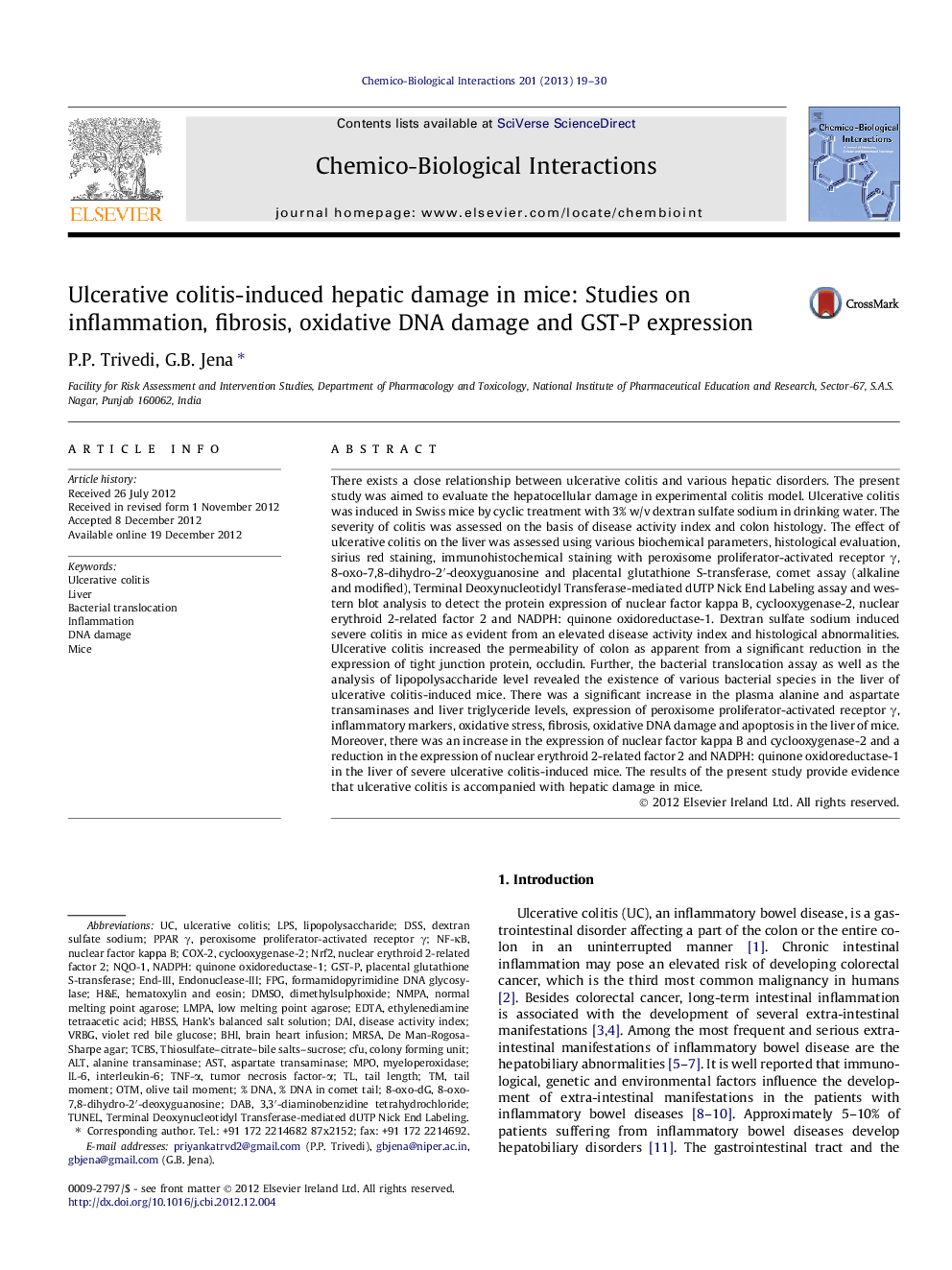| Article ID | Journal | Published Year | Pages | File Type |
|---|---|---|---|---|
| 2580836 | Chemico-Biological Interactions | 2013 | 12 Pages |
There exists a close relationship between ulcerative colitis and various hepatic disorders. The present study was aimed to evaluate the hepatocellular damage in experimental colitis model. Ulcerative colitis was induced in Swiss mice by cyclic treatment with 3% w/v dextran sulfate sodium in drinking water. The severity of colitis was assessed on the basis of disease activity index and colon histology. The effect of ulcerative colitis on the liver was assessed using various biochemical parameters, histological evaluation, sirius red staining, immunohistochemical staining with peroxisome proliferator-activated receptor γ, 8-oxo-7,8-dihydro-2′-deoxyguanosine and placental glutathione S-transferase, comet assay (alkaline and modified), Terminal Deoxynucleotidyl Transferase-mediated dUTP Nick End Labeling assay and western blot analysis to detect the protein expression of nuclear factor kappa B, cyclooxygenase-2, nuclear erythroid 2-related factor 2 and NADPH: quinone oxidoreductase-1. Dextran sulfate sodium induced severe colitis in mice as evident from an elevated disease activity index and histological abnormalities. Ulcerative colitis increased the permeability of colon as apparent from a significant reduction in the expression of tight junction protein, occludin. Further, the bacterial translocation assay as well as the analysis of lipopolysaccharide level revealed the existence of various bacterial species in the liver of ulcerative colitis-induced mice. There was a significant increase in the plasma alanine and aspartate transaminases and liver triglyceride levels, expression of peroxisome proliferator-activated receptor γ, inflammatory markers, oxidative stress, fibrosis, oxidative DNA damage and apoptosis in the liver of mice. Moreover, there was an increase in the expression of nuclear factor kappa B and cyclooxygenase-2 and a reduction in the expression of nuclear erythroid 2-related factor 2 and NADPH: quinone oxidoreductase-1 in the liver of severe ulcerative colitis-induced mice. The results of the present study provide evidence that ulcerative colitis is accompanied with hepatic damage in mice.
► Ulcerative colitis induced hepatic damage in mice. ► Ulcerative colitis led to bacterial translocation to the liver. ► Inflammation, oxidative stress, steatosis and fibrosis were observed in the liver. ► Elevated oxidative DNA damage, apoptosis and GST-P expression were also observed. ► Increased NF-κB and COX-2 expression and decreased Nrf2 expression were also found.
